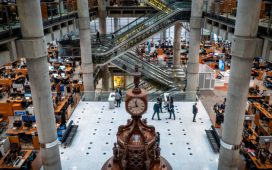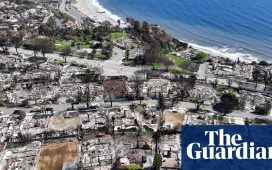Unlock the Editor’s Digest for free
Roula Khalaf, Editor of the FT, selects her favourite stories in this weekly newsletter.
The chief executive of the Lloyd’s of London insurance market has said insurers should “just get on with it” and pay out for the Baltimore bridge collapse, rather than waiting for years of wrangling over which part of the sector is liable.
The global insurance sector is expecting billions of dollars of claims after the Dali container ship struck the Francis Scott Key Bridge on Tuesday, including for repairing damage to the bridge and paying out for business interruption to a busy eastern US port.
Lloyd’s boss John Neal told the Financial Times that the incident had the potential to produce the largest marine insurance claim in history, topping the crash of the cruise ship Costa Concordia in 2012, which cost about $1.5bn.
“The good news here is the insurance is in force,” said Neal on Thursday. “The boat is insured, the bridge is insured, the port authority is insured.” The episode would show “how insurance works”, he added.
The financial impact on the whole market is likely to be in the billions, he said, with up to $1bn due for the bridge reconstruction alone. Reinsurers, including Lloyd’s companies, are expected to bear the brunt.
“There is a lot of cover for the [protection and indemnity] element to address,” said Neal, citing the $3bn of liability reinsurance that the ship has access to through the International Group of P&I Clubs.
He said the impact on the Lloyd’s market would be manageable, given that its share of the potential losses was well spread across insurers.
There would be many debates over liability such as who was responsible for the vessel and whether the port authority carried any liability, he said.
Some market participants have highlighted US laws dating to the 19th century, which were invoked after the sinking of the Titanic, that limit liability for shipowners. Two marine experts said this would require the owners to show they did not have any previous knowledge of problems with the ship.
Synergy Group, the Singapore-based owner of the Dali, did not immediately respond to a query about whether it planned to take advantage of the limited liability provisions. But in a statement early on Thursday, the company expressed regret over the tragedy.
“We deeply regret this incident and the problems it has caused for the people of Baltimore and the region’s economy that relies on this vitally important port,” it said.
Neal said: “I don’t think anybody is going to stand in the way of repair.” The wrangling as to which group was more liable “can go on quietly and sensibly, and it will go on behind the scenes”, he said.
The US government has said insurance payouts should “ultimately” contribute to the construction costs, but it does not want financing concerns to delay the rebuilding effort.
Rather than the federal government dipping into its funds, Neal said, it would be “far better for the insurers to stand up and say hey, let’s actually begin to deal with all of this”.
He gave the bridge repair as one example. “The lead insurer on the bridge is Chubb. If they want to start rebuilding the bridge, Chubb can help to pay for that. And then it can get into the right arguments over who it recovers from, when and how much.” Chubb declined to comment.
The ship’s lead liability insurer, Britannia P&I, said on Thursday it was “working closely with the vessel’s owner and manager and the relevant US authorities as part of the investigation into the casualty”.
Additional reporting by Robert Wright











